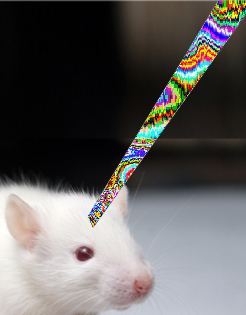AI probes tiny brains
 Researchers are using AI to read the minds of mice.
Researchers are using AI to read the minds of mice.
Using artificial intelligence (AI), US scientists have been able to decode the brain activity of a mouse to tell where it was located and which direction it was facing.
The study - funded by the US army - was performed using previously generated data from the animal's brain cells, and not in real-time.
However, the researchers say their work should show how individual brain cells act and what they do, and could contribute to the design of intelligent robots, as accurate navigation in robots is currently a challenge.
The scientists used data from two types of brain cells to snoop on the mouse, 'head direction' cells, which encode information about which direction the animal is facing, and 'grid cells', which encode information about the animal’s location within its environment.
“Current intelligence systems have proved to be excellent at pattern recognition, but when it comes to navigation, these same so-called intelligence systems don’t perform very well without GPS coordinates or something else to guide the process,” says senior researcher Vasileios Maroulas, a mathematician at the University of Tennessee, Knoxville.
“I think the next step forward for artificial intelligence systems is to integrate biological information with existing machine-learning methods.”
Unlike previous studies that have tried to understand grid cell behaviour, the team based their method on experimental rather than simulated data.
The data, which was collected as part of a previous study, consisted of neural firing patterns that were collected via internal probes, paired with “ground-truthing” video footage about the mouse’s actual location, head position, and movements as they explored an open environment.
The analysis involved integrating activity patterns across groups of head direction and grid cells.
“Understanding and representing these neural structures requires mathematical models that describe higher-order connectivity, meaning ‘I don’t want to understand how one neuron activates another neuron, but rather, I want to understand how groups and teams of neurons behave’,” says Maroulas.
Using the new method, the researchers were able to predict mouse location and head direction with greater accuracy than previously described methods.
Next, they plan to incorporate information from other types of neurons that are involved in navigation and to analyse more complex patterns.
Ultimately, the researchers hope their method will help design intelligent machines that can navigate in unfamiliar environments without using GPS or satellite information.
“The end goal is to harness this information to develop a machine-learning architecture that would be able to successfully navigate unknown terrain autonomously and without GPS or satellite guidance,” says Maroulas.
The full study is accessible here.







 Print
Print